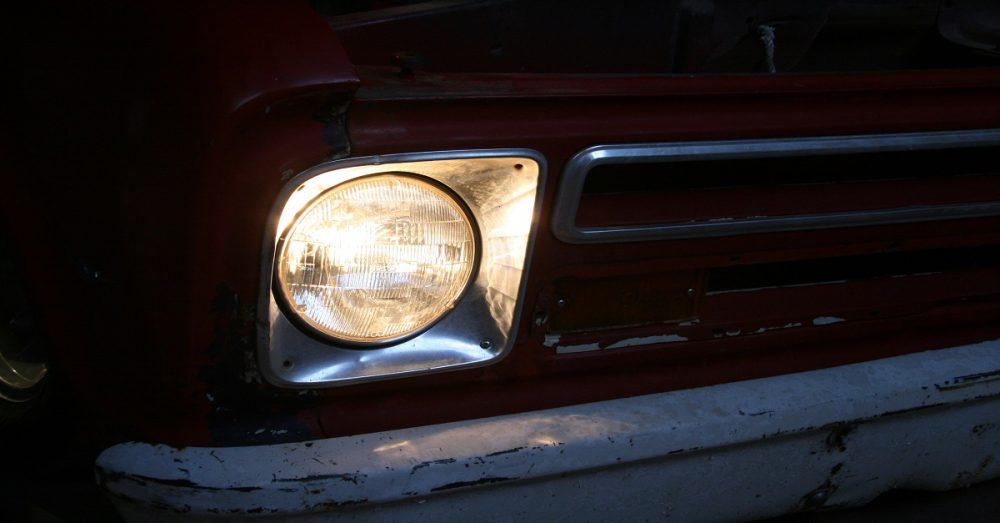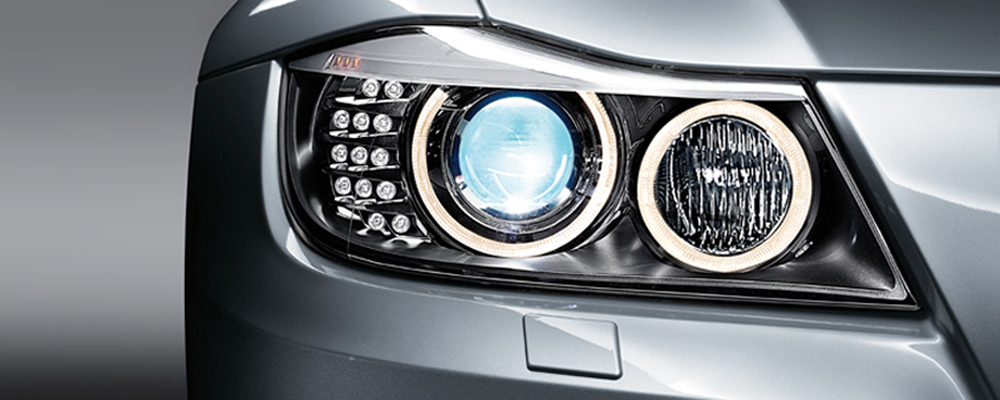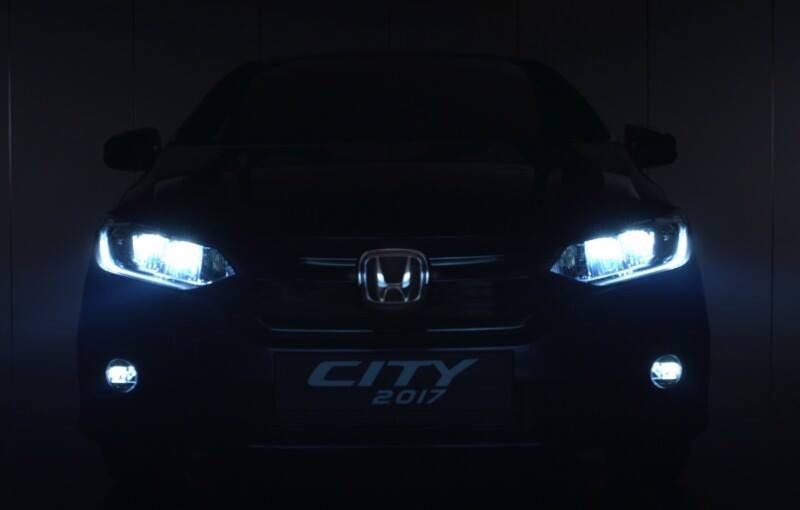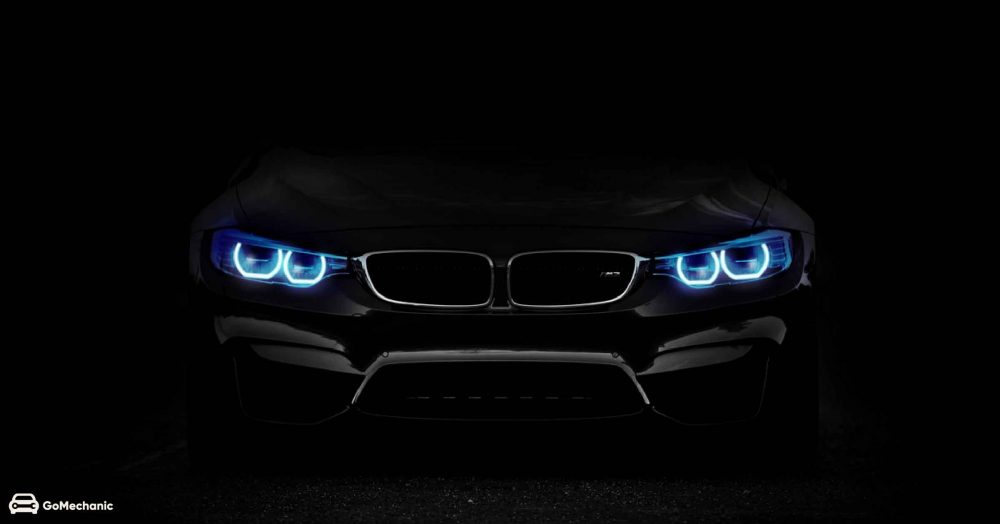Automotive lighting is one major aspect of any car. How many times it has been that lights of the vehicle have actually turned heads? Lights can take any car from 0 to 100 real quick, and for real good. However, these lights aren’t something simple. A single look at a car’s headlight can change the overall perception of the car. Moreover, it’s not just about the practical use but it gives the car a character, a demeanour. Whether its the DRLs or the signature headlights of a BMW, headlights say a lot.
So what are the different types of headlights that light up not just your car but everything around it? Let’s try and understand all of them one by one
Also Read: Why Turbo Petrol Cars Are All The Rage Nowadays?
1. Halogen Headlights

Fun Fact! Halogen gas is actually poisonous and highly reactive in nature. Yes, those seem out to be quite a few cons of the headlamps. But when it comes to its usage, they turn out to be the most widely used headlamps for cars. Halogen bulbs are one of the oldest forms of lights in the field of automotive lighting.
The bulbs in halogen headlights have a tungsten filament and a capsule. This capsule is filled with the halogen gas. Now, every time the light is turned on, the gas routes back the tungsten to regenerate the filament. This reaction causes the halogen and the filament to light up.
Pros: The halogen bulbs are actually quite cost-effective. They are easy to use and have a ‘plug and play’ mechanism. Halogen bulbs have a regular bulb design and can be fitted easily.
Cons: The bulbs are cost-effective, but that usually comes at a cost. Halogen light bulbs tend to heat up easily. This gradual heating up and higher energy consumption make their lives shorter.
2. Xenon / HID Lights

The Xenon is again a colourless and odourless gas. The gas is used in lighting up cars. The gas reacts with electricity and emits a bright white light when electricity passes through it. It is derived from liquefied air, which is used for commercial purposes. Instead of a golden-yellow light, the xenon lights emit a bright white light.
The lights do not have a filament in place and are also known as High-Intensity Discharge lights. Xenon lights tend to have different sockets and won’t work in place of halogen bulbs. HID lights offer up to 90 % better lighting than halogen bulbs.
Pros: The xenon lights emit a brighter light than its halogen counterpart. This brighter light means a longer range and hence better visibility. Moreover, they look good aesthetically and are also available in a variety of colours.
Cons: The xenon bulbs are costlier than their halogen counterparts. Moreover, the xenon bulbs are infamous for their glare.
Suggested For You: Engine Oil | A Comprehensive Guide | Everything You Need To Know
3. L.E.D Headlamps

The LED (Light Emitting Diode) headlights are undoubtedly the most popular headlamps out there. LED headlamps have actually become a status symbol in the country. Not only do they make the car look better, but it also adds an aura around it.
So much is the craze for LEDs out there, people actually want to keep them on 24×7. After the LEDs came the DRLs (Daytime Running LEDs) and spread like a wildfire on the popularity scale. Most of the upcoming cars started coming with pre-fitted LEDs, to satiate the demand.
The term LED stands for light-emitting diodes. When you look at a typical LED light bulb you’ll see a number of smaller LED bulbs in the main light bulb. This is because the smaller LED bulbs give out a smaller amount of light.
Hence, the light from all the bulbs is cumulated and forms a brighter source of light for the car. These lights have to be placed strategically. This is because the LED bulbs emit light in a very narrow angle.
Pros: The LED light bulbs are more durable than their other counterparts. This means while they might be expensive, their durable nature guarantees savings.
Cons: The LED lamps usually tend to emit light in a very smaller area. This concentrates the energy and increases the heat. Due to this increased heat, a cooler base is required to support them.
4. Laser Lights

Laser lights are the new talk in the town of automotive lighting. The laser lights stimulate a gas along with a laser beam, which then glows extremely bright. This laser light is supposed to be 10 times brighter than LED lights. Shuji Nakamura developed the lighting system. He won the Nobel Prize for developing the system in the last five years.
SLD Laser, the company of the Nobel Prize winner says that the laser lights are able to illuminate an object over a kilometre away.
The new set of laser headlamps will come on some vehicles in Europe like the BMW M Series and 5 Series. However, it might take time for the lights to reach India.
With new technologies coming in every day, the cars are surely going to get better day by day. While automotive lighting has come a long way since the inception of cars. Lights are just one of the aspects being factored in over here.
You Might Also Like: Self Driving Cars in India | All is Not Lost with Autonomous Cars






[…] so you can always find new and exciting LED products that can use for lighting your car. The LED lights can illuminate different parts of your car, like your car’s headlights. What is your […]
Great info sir, Thanks for share this